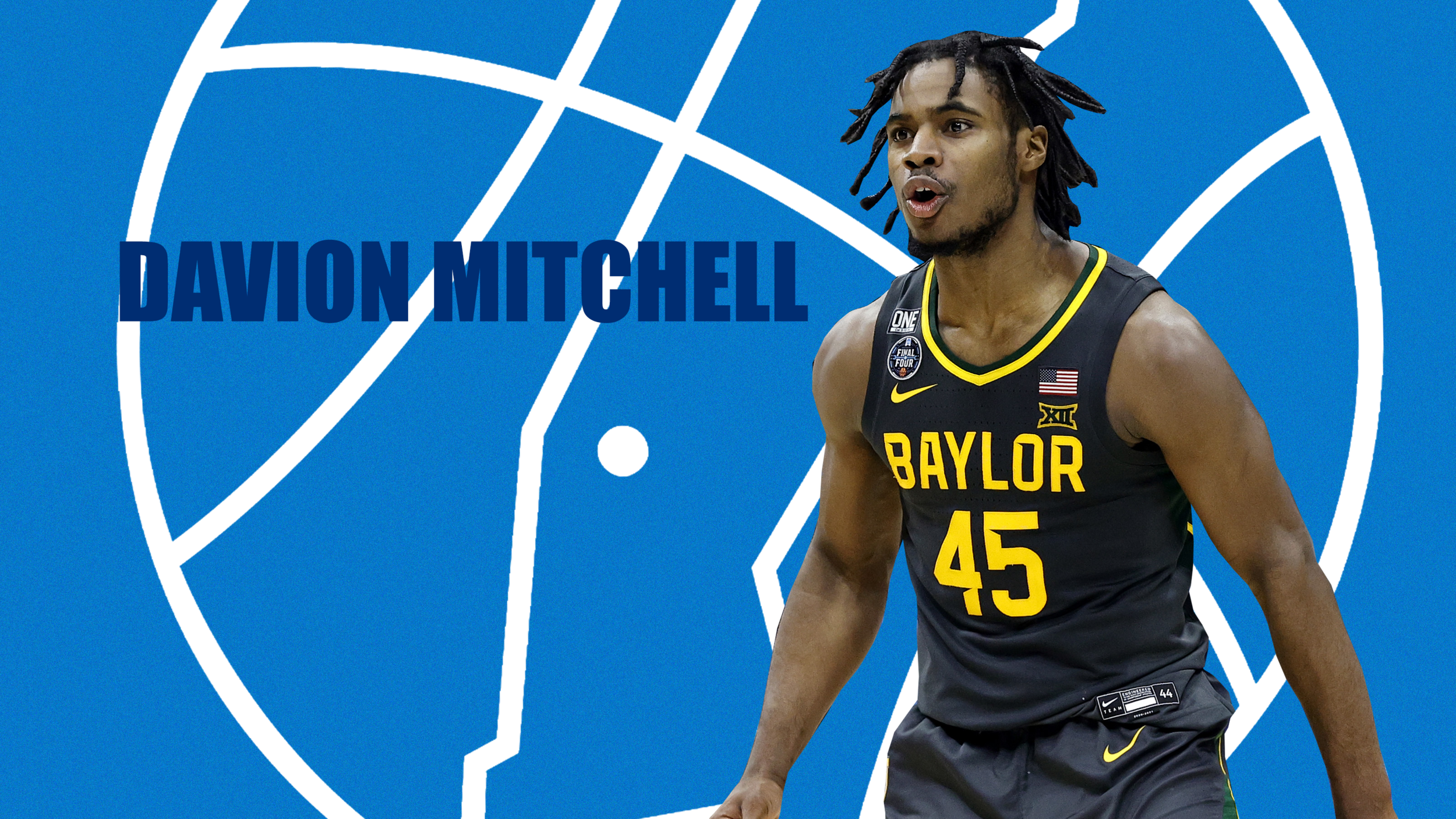2021 NBA Draft Profile: Davion Mitchell
A small point guard and one half of the 2021 NCAA Champion backcourt for Baylor, Davion Mitchell has shot up draft boards as a potential plug-and-play option. But could he actually be less NBA-ready than advertised?
Position: Point guard, Baylor University
Age: 22 (9/5/1998)
Height: 6 ft 1 in
Wingspan: 6 ft 4 in
Weight: 202 lbs.
Strickland 2021 Big Board Rank: 27
The Sales Pitch: Everything starts with defense. Despite his small frame, the dude can straight up go on that end of the floor. Davion’s elite at being an on-ball pest, mainly due to his great core strength and low center of gravity. In isolation, he’s a tough guy to go against because he moves so well laterally, and has the upper body strength to negate bully-ball. Even though he only averaged 14 a game, he showed real potential as a three-level scorer. He also flashed a blossoming off-the-dribble game (he has a really great handle), where he displayed floaters, pull-ups, and slick finishing around the bucket.
Elite Traits/Skills: Defense, work ethic, finishing, ball handling
The Devil’s Advocate argument: How valuable is a one-position defender in today’s NBA? At 6-foot-1 with a 6-foot-4 wingspan, that’s most likely going to be Mitchell’s fate. Despite being point guard sized, he’s also been a below-average to average decision maker, a questionable shooter, and hasn’t yet shown the ability to be a reliable scoring option. There is optimism that he could have a Patrick Beverley type of career arc, but even in that instance, a lot would have to go right for him to reach that outcome.
The Misconceptions: That he’s a really good shooter. There is a strong correlation between free throw percentage and actual shooting ability. Although his 3-point percentage increased drastically between his sophomore and junior years, his FT% remained abysmal. There is a strong possibility that he’s merely an average shooter, considering this is over 2000 minutes of data that we’re looking at. That wouldn’t be a death sentence, but it would alter his would-be trajectory by quite a bit.
Important numbers:
44.7%: His 3P% during his junior season
66%: His career FT%
60.5%: His FG% at the basket — very solid number
3.3: His steal rate
.207: His free throw attempt rate. For comparison, Lonzo Ball and Tyrese Haliburton had a FTA rate of .286 and .184, respectively
2.9: His rebounding average per 40 minutes — a poor outcome, even for a guard
16: His amount of floater attempts in 30 games — a shot that he’ll absolutely need to master if he wants to become a consistent scoring threat at the next level
Knicks Fit: I’m overall skeptical about the fit. There is value in having a menacing point-of-attack defender and change-of-pace guard off the bench during the grind of a long regular season. But we’ve seen those types of players be ineffective come playoff time, especially if they have trouble generating good offense. It’s difficult to see Mitchell having more of a positive offensive impact than a guy like Immanuel Quickley, who’s a much better and more consistent shooter and can draw fouls at a much higher rate (while also being a year younger). Add in Luca Vildoza, and it would be difficult to see Mitchell getting the development minutes that he actually needs to continue improving. There are certainly worse fits out there, but calling this one less than ideal shouldn’t be a stretch.


